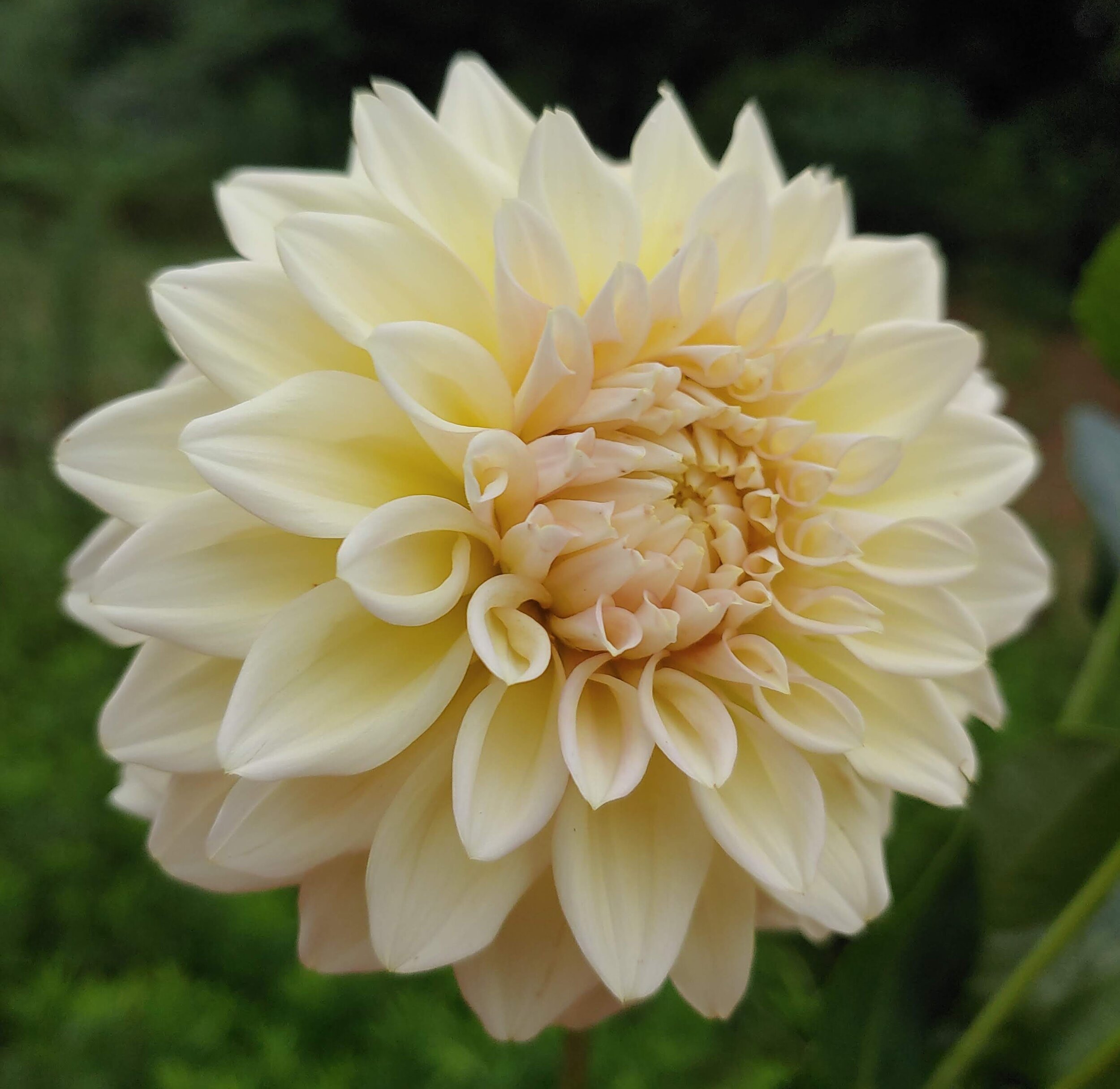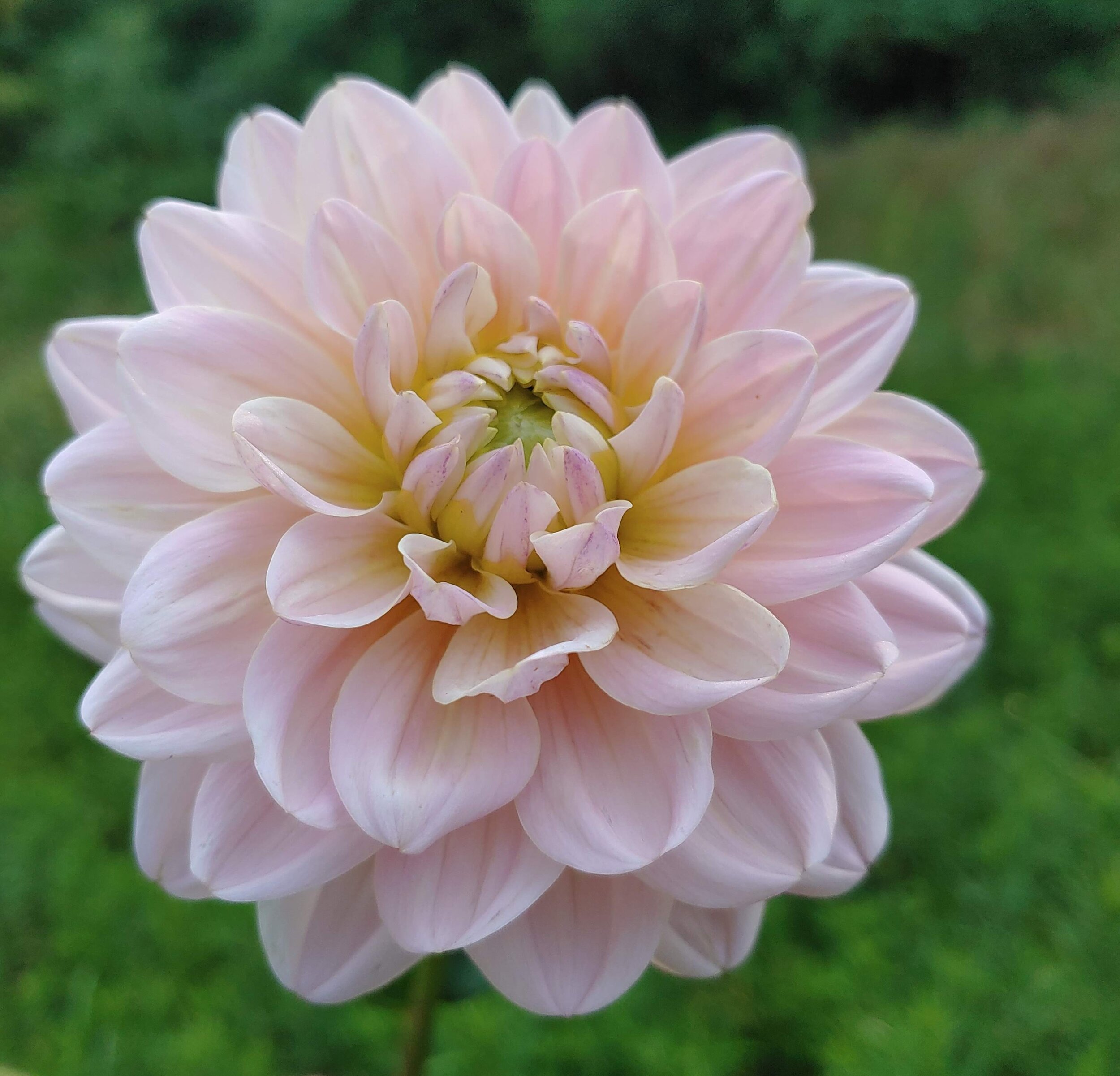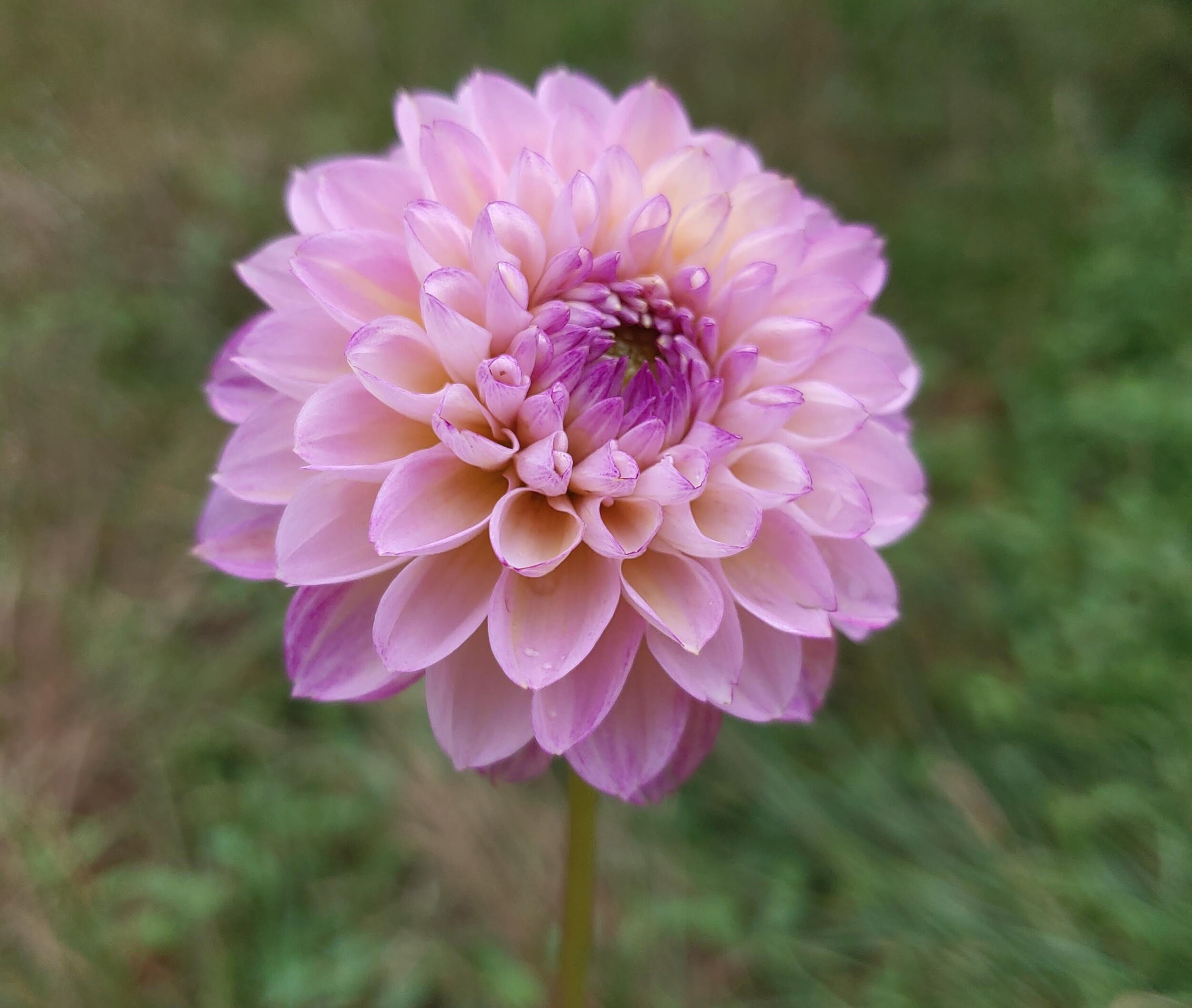
Winter Dahlia Care- Part 1
I’ve gotten lots of questions about how to care for your dahlias over the winter. Here’s part 1 of a multi-part series to get you started:
Harvesting Tutorial
A few weeks ago, one of our subscribers requested a harvesting tutorial so I recorded a short video showing you how I cut dahlias.
What's Eating My Blooms?
How many times have you walked up to a bloom to admire it’s beauty and then turned it around to find the petals chewed up?
In my case, quite a few times! A few weeks ago, Valerie sent me these pictures of her dahlias wondering what to do.
Petals chewed to bits and black mounds left behind.
I knew instantly what was wrong because unfortunately I’ve seen it all too often: Grasshoppers! Definitely one of the top nemesis when growing dahlias. The black mounds (grasshopper poop) are the tell-tale sign. Grasshoppers love them some dahlia petals.
So what’s a grower to do? You have a couple options. The most organic way is to cover the bloom with an organza bag- commonly known as dahlia pops!
If you put the bag on the bloom at the green bud stage (once the bud is sturdy enough to hold itself up on the stem without flopping but before it’s showing any color), the bag will keep pretty much any muncher out. The organza bag system is a great one for production growers dealing with lots of blooms.
Perfect stage for bagging
A bit late but better late than never
However if you grow dahlias to enjoy their beauty in your garden, you probably don’t want to look at bags. So your next option is to spray or find something that eats grasshoppers. If you keep chickens, they love them and can keep your population at a controllable level. Other birds will help too. Having a source of water in your yard encourages birds to come. Then they stay and eat your bugs!
Spraying will help but grasshoppers are so thick skinned that it’s hard to find an organic spray to deal with them. Most organic pesticides aren’t strong enough.
Creating a thriving ecosystem in your yard yields better results. Also I’ve found that the more dahlias I grow, the more perfect blooms I get. I mean, they can’t eat them all! And I’m good with any excuse to grow more dahlias!
How to Achieve the Best Vase Life Out of Your Dahlias
Why is it that some of the most beloved flowers don’t last very long? Is that why we love them? Their ethereal beauty? Dahlias definitely fit into this category!
Before we begin, let’s set some expectations. Dahlias are a shorter vase life flower. There’s no way around it- it’s not gonna last 2 weeks. On average dahlias last from 3-7 days. Rarely do I find a variety that goes longer than 7 days.
However there are some basic tips to get the longest life possible out of your blooms. (And don’t you dare skip this part b/c everyone thinks they know this but almost everyone doesn’t do at least one of these!)
3 Basic Tips for Harvesting Cut Flowers:
Clean Vase, Bucket, Vessel — whatever your flowers are going into. Yeah, yeah, yeah— We know this. But do you really? More often than not, when people come to pick up flowers, they grab a random bucket and it’s always dirty. Florist and retail customers alike. I rarely see nice clean buckets. Now I know some people go clean their bucket when they get home or to their shop but at that point, the bacteria has already been introduced to the flowers. You want the bucket to be so clean you would let your kids drink out of it! Bacteria is the worse cause of shortened vase life.
Clean and Sharpen Your Clippers- Make sure you are cleaning your clippers regularly. Like at least once a week. You can scrub them, use an alcohol dip, or a special cleaner. Doesn’t really matter how, just make sure you are cleaning them. Also make sure they are sharp and make sure you are using actual clippers— kitchen and crafting scissors aren’t really made for harvesting flowers. There are some specialty floral scissors out there that can work if you prefer to cut with scissors instead of clippers. ARS is my favorite brand; I like the light duty fruit pruner to harvest.
Harvest in the Early Morning or Evening- Never cut in the middle of the day if you live in a hot climate. Every summer I’m jealous of Northern farmers who can harvest all day. Sugars in the plants are highest in the morning so it’s a good time to cut. The plants will re-hydrate faster. However, the evening will work too if you aren’t a morning person.
These 3 tips work with all cut flowers but now let’s talk about dahlias specifically. I had a conversation about vase life with a fellow grower last week and we were sharing our processes. And as has happened many times in the past, every grower I talk to does it a little differently. So I’m going to share my process- your mileage may vary!
Why is it not “one size fits all?” Because dahlias more than other flowers are very susceptible to changes in water (City or well, minerals in the water, etc), how hydrated the plants are in the field, current weather conditions, etc. Time of year plays a big part too- During the summer, I usually see a reduction of 1-2 days in vase life from the cooler days of Fall.
I’m going to talk about this from 3 points of view:
For the Home Gardener:
First- make sure you are following the above 3 steps. Second, go online right now and order a container of flower food. Chrysal and Floralife are the two most well known brands- either will work. I’ve never noticed one better than the other. You are looking for a powdered substance- not Quick Dip or Holding solution. Make sure you get flower food for cut flowers— not growing plants. ;)
Place the flower food in your water as you are harvesting. Let the blooms sit in the bucket in a cool, darkish place for at least 2 hours before using them. They need to cool off and really drink before you arrange them. Then make sure you put flower food in your vase as you are arranging. Read the directions on your particular brand and use accordingly.
So why did I tell you to go get flower food instead of the popular- “Just put a few drops of bleach in it” method. Well because dahlias need sugar— Flower Food not only has a bactericide which keeps your water clean but also has a sugar component which feeds your dahlias. Not every flower needs this but dahlias definitely do! Vase life usually increases by 2 days when you start using flower food.
Recut your stems at least every other day and change the water/flower food. You can do it daily if you really want but I’ll be honest, I don’t have time for that. (I actually do my vase life trials where I treat the blooms as rough as possible to see how long they can really make it!)
For the Commercial Flower Grower:
So obviously follow the 3 basic steps above. After I’ve cleaned my buckets, sharpened shears, I squirt holding solution into my water. Holding solution is a product that hydrates your flowers but also keeps them from opening. This is perfect for dahlias because you want a solution that slows down the natural process. After I have finished harvesting, I remove the organza bags and then I recut my stems into a fresh bucket of water with holding solution. (If you don’t use organza bags you may can skip this step b/c you aren’t taking the stems out of water to remove the bags— but check your water, sometimes it can become nasty while harvesting. You want it clean before it goes into the cooler).
The next step is to place your dahlias (make sure they are dry) inside the flower cooler. Now, I’m gonna step on my soapbox for a minute- If you are growing dahlias commercially, you need a flower cooler. Doesn’t matter if you are growing 10 plants or 10,000, you need a cooler to properly condition your flowers. The flower cooler gets the field heat out quickly which is imperative for good vase life. A cooling period of at least 12-16 hours “sets” the bloom- really this is the period the flower needs to hydrate properly. Then the dahlias can be held for up to 3 days before sale. I don’t hold any longer than that because after that vase life starts to drop dramatically. I try to cut my dahlias as close to their sale date as possible. The flower cooler is crucial to getting a high quality stem. Having a cooler means you can cut the flower at it’s peak point and not cut everything the night before you need them— this results in blooms being past their prime and not lasting very long. A cooler is one of the first investments you should make as a commercial flower grower. Ok- Off my soapbox now.
For the Florist:
If you are growing your own dahlias, follow the steps for a home gardener or if you have a flower cooler, then follow the steps for a commercial grower.
But let’s talk about processing dahlias when you receive them from the grower. First off, get to know your grower. Ask them if they have a flower cooler- if not, I’d hesitate before buying from them. If you can get your stems the day before your event, they’ll be fine. But if not, go with a grower who has invested in a cooler and has put time into learning how to condition their flowers. The stories I hear from florists about dahlias crashing on the wedding day are usually from growers who aren’t putting in the time to learn how to condition their flowers.
Now that you have vetted your grower, recut the stems into cool water with flower food. Once the stems come out of the cooler (from your grower or your own), they should go into flower food. You’ll also want to put flower food into your container water when designing with dahlias. Honestly flower food is a good idea anytime you are mixing flowers. There’s bound to be a dirty stem type of flower in your mix.
If you have a flower cooler, store your dahlias or arrangements with dahlias in there until your event day. If using large blooms such as cafes, I’d recommend adding those onsite as they can snap their heads easily during transport. If you are using dahlias in retail arrangements/bouquets, I’d recommend sticking to ball types or smaller decoratives. Those usually have a longer vase life. It would also be a good idea to question your grower as to what varieties last the longest in the vase. Also, when using dahlias for retail, it’s best to sell them within 3 days of receipt. Any longer than this and the end consumer won’t have much vase life. I always appreciate when a florist lets me know how they plan to use their dahlias- then I can give them the freshest bloom possible for their intended use.
To summarize- Clean Vessel Always, Sharp Clean Clippers, Cool Temperature Harvest, and Flower Food give you the longest vase life!










